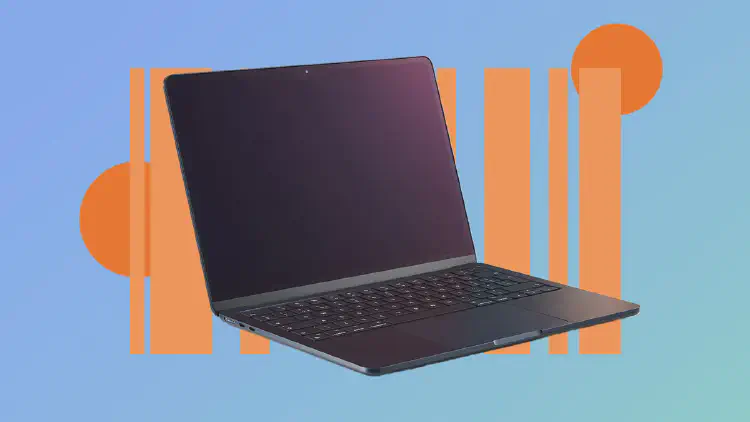Free Government Laptops
how you can obtain a free laptop through top programs like EBT, Medicaid, and the Affordable Connectivity Program (ACP). I will cover eligibility requirements, necessary documentation, the online application process, and answer common questions. Let’s delve into the details.

- john shim
- 5 min read

In today’s digital age, computers are an essential part of daily life. Some 94% of American households have at least one computer, using them to pay bills, search for information, and enjoy entertainment. Many also rely on these devices for work and education, especially with the rise of remote work and online learning. However, for low-income families without access to a working computer, this digital divide can pose significant challenges.
If you’re looking to bridge this gap and secure a computer for your household, several organizations across the U.S. offer free computers and laptops to low-income families. These programs can provide the necessary tools to apply for jobs, access vital resources, and offer children more equitable educational opportunities.
Adaptive.org: Empowering Young Learners and Seniors
Adaptive.org is dedicated to providing computers and laptops to low-income households with children. The program is specifically designed for kids aged 5 up to college age, offering them the opportunity to receive a free PC or laptop. This initiative ensures that children have the necessary tools for their education. Additionally, Adaptive.org extends its services to senior citizens and individuals with disabilities, recognizing the importance of digital access for all ages. For more details, you can reach out to them at 1-800-763-3097.
Computers With Causes: A Charitable Network
Computers With Causes is a national organization under the Giving Center, a 501(c)3 Non-Profit Charitable Organization. They aim to teach the value of giving and its significant impact on others’ lives. The application process is straightforward: applicants explain their needs, and after a needs assessment and background check, the organization works to provide the necessary computer. This process ensures that the donations go to those who genuinely need them, fostering a culture of generosity and support.
Everyone On: Connecting Communities
Everyone On focuses on bridging the digital divide by connecting low-income individuals with affordable internet service providers and device providers. Their goal is to provide no-cost, low-cost, or affordable computers to those in need, ensuring access to affordable internet services. An interesting feature of Everyone On is the locator tool available on their website, which helps users find local internet offers, device offers, and digital literacy training providers.
Freecycle: Community-Driven Technology Recycling
Freecycle offers a unique approach to obtaining computers. This platform connects people looking to give away items, including computers, with those in need. Many households have old computers collecting dust, and Freecycle helps redistribute these to others. Users can browse boards in their area to find available computers or post requests. It’s a practical solution, but users should ensure that any computer they receive is fully wiped of personal information for security reasons.
Microsoft Registered Refurbishers and PCs for People
Microsoft, a giant in the computing world, participates in redistributing refurbished computers through its Registered Refurbishers program. PCs for People, a notable participant in this initiative, provides computers to individuals below 200% of the poverty level or those eligible through income-based government assistance programs like SNAP, Medicaid, and others. This program helps ensure that recipients not only receive computers but also have access to affordable internet services, making it a comprehensive solution for digital inclusion.
The On It Foundation: Supporting Education
The On It Foundation (Opportunities Necessary to Increase Learning) is focused on getting computers into the hands of children from grades K-12 in low-income households. To qualify, the family must meet certain criteria, including participation in a free or reduced lunch program. The application involves submitting a letter from the parent or guardian, along with a school letter on official letterhead confirming the child’s eligibility. This program is vital in ensuring that children have the technology they need to succeed academically.
World Computer Exchange: Global Outreach
World Computer Exchange extends its efforts globally, providing computers to underserved communities through partnerships with NGOs, governments, schools, and libraries. This program is need-based, requiring applicants to demonstrate their low-income status. Once qualified, the organization works with its partners to provide both a computer and internet access, ensuring comprehensive support for digital inclusion.
Government Programs: Broadening Access
In addition to these non-profit organizations, several government programs also offer free or low-cost laptops. For instance, the Affordable Connectivity Program (ACP) provides financial assistance for purchasing laptops and subsidized internet services. Programs like ConnectHomeUSA and the Digital Equity Initiative work to provide digital resources to underrepresented communities. Internationally, the One Laptop per Child (OLPC) program focuses on providing affordable laptops to children in low-income regions, ensuring educational access worldwide.
Applying for Free or Low-Cost Computers
To apply for these programs, applicants typically need to demonstrate financial need or participation in government assistance programs. Required documentation might include tax returns, proof of participation in programs like SNAP or Medicaid, or letters from educational institutions. Some programs may also consider the applicant’s household composition, prioritizing families with dependents or individuals with special needs.
For those interested in applying, it is essential to research each program’s specific requirements and processes thoroughly. Many organizations offer streamlined online application systems, making it easier for applicants to access these valuable resources.
Conclusion: Taking the First Step Towards Digital Inclusion
Access to computers and the internet is no longer a luxury but a necessity in today’s world. Various organizations and government programs are actively working to bridge the digital divide by providing free or low-cost computers to those in need. These resources empower individuals and families, opening up opportunities for education, employment, and personal growth. If you or someone you know is in need of a computer, exploring these options could be a transformative step toward greater digital inclusion and opportunity.